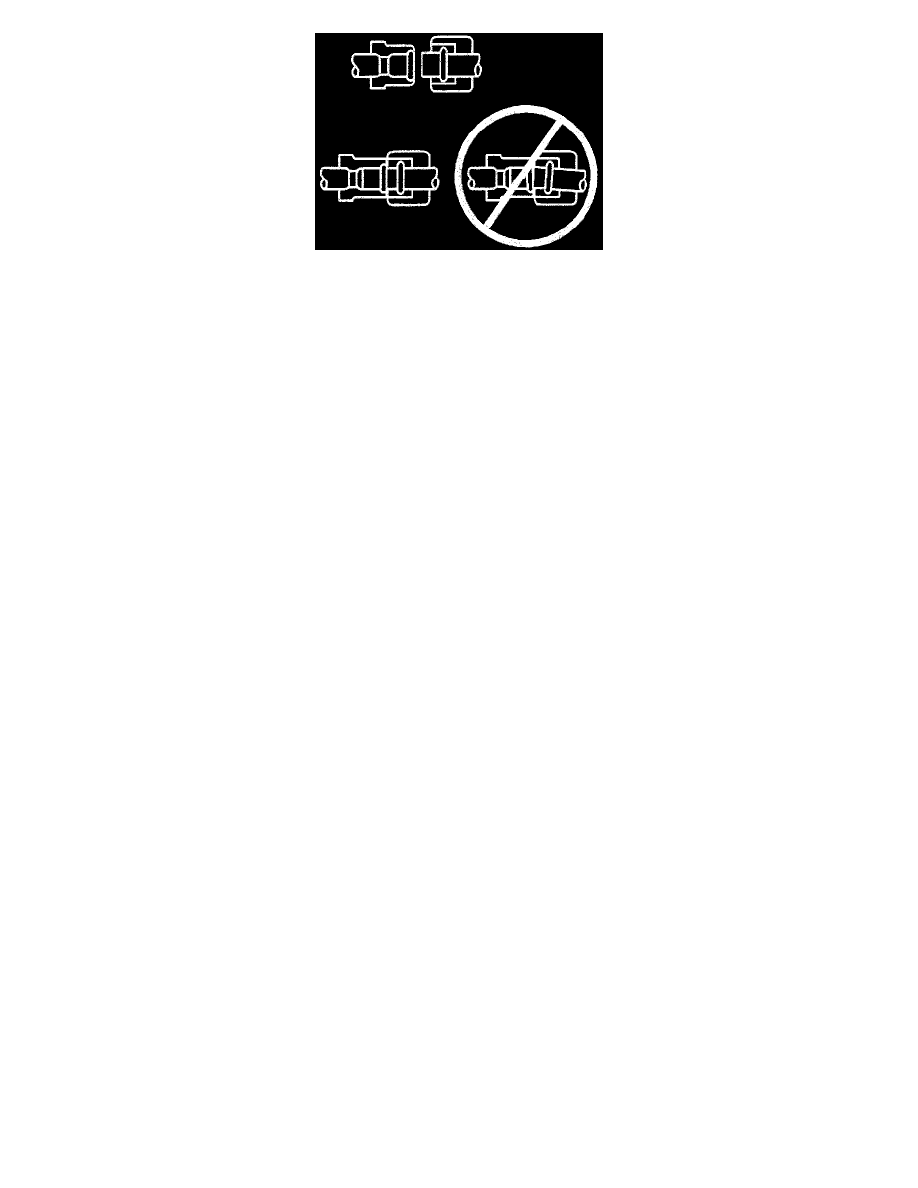S10/T10 P/U 2WD V6-4.3L VIN W (1997)

Refrigerant Line Installation Figure 27
HANDLING OF REFRIGERANT LINES AND FITTINGS
All metal tubing lines should be tree of dents or kinks to prevent loss of system capacity due to line restriction.
-
The flexible hose lines should never be bent to a radius of less than four times the diameter of the hose.
-
The flexible hose lines should never be allowed to come within a distance of 6.5 mm (2.5 inches) of the exhaust manifold.
-
Flexible hose lines should be inspected regularly for leaks or brittleness. Replace with new lines if deterioration or leaking is found.
-
When disconnecting any fitting in the refrigerant system, recover all Refrigerant-134a However, proceed very cautiously, regardless of the
gage readings. Open very slowly, keeping your face and hands away so that no injury can occur. If pressure is noticed when a fitting is
loosened, allow it to bleed off very slowly.
CAUTION: Never use alcohol on the refrigeration system In an attempt to remove moisture Damage to system components could occur.
-
If any refrigerant line is opened to the atmosphere, cap it immediately to prevent the entrance of moisture and dirt These can cause internal
compressor wear or plugged lines in the condenser and evaporator core and expansion (orifice) tubes or compressor inlet screens.
-
Remove sealing caps from subassemblies just before making connections for final assembly. Use a small amount of clean 525 viscosity
refrigerant oil on all tube and hose joints. Use new O-ring seals dipped in 525 viscosity refrigerant oil when assembling joints. The oil will aid
in assembly and help to provide a leakproof joint. O-ring seals and seats must be in perfect condition. A burr or a piece of dirt can cause a
refrigerant leak.
-
Use the proper wrenches when making connections on O-ring seal fittings. Using improper wrenches may damage the connection. The
opposing fitting should always be backed up with a wrench to prevent distortion of connecting lines or components. When connecting the
flexible hose connections, it is important that the swaged fitting and the flare nut, as well as the coupling to which it is attached, be held at the
same time using three different wrenches to prevent turning the fitting and damaging the seat.
-
Tighten tubing connections to the specified torque. Refer to "Specifications."
